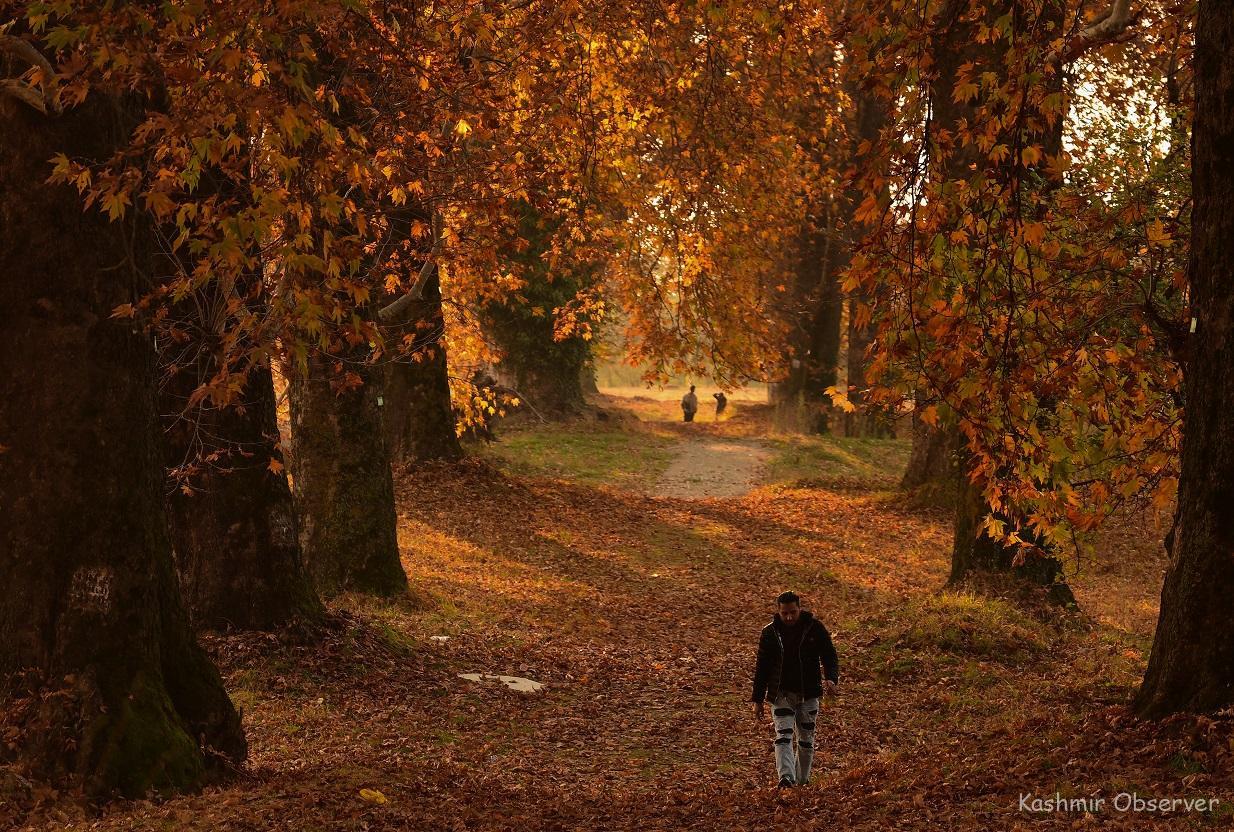
My Autumn Fascination
KO File Photo By Abid Bhat
By Mushtaq Hurra
I relish and rejoice the days when summer morphs into autumn because the pleasant dip in mercury bids adieu to the sweltering and scorching heat of the summer. Autumn almost
arrives with enticement to conjure the atmosphere with a plethora of romantic vibes. Human heart experiences mixed feelings and emotions, making the season a mojo. Dulcet melodies produced by the delicate vibrations in tymbals of the mellifluous cicadas, impregnate the surroundings with the symphonious songs which liberate our ears from the fuss of cacophonous
gadgets and gizmos.
The euphonious choruses of these tiny musicians resonate through the atmosphere in such a way, as if the musical maestros across the globe have come together to perform in concerts. The musical ambience adds saccharinity and solace to our eardrums. Though we can't deny the fact that autumn symbolises cruelty and callousness also, because it sends greens and grains to grim gallows gradually, yet its hypnotizing mellows paint viridescent vegetations to wheatish yellow, presumably, if the rising golden sun daubs everything to the blonde hues of fire which add curiosity, confidence and joy to our veins.
Aromatic fragrance of the red-ripe apples and Mushkbudji species of paddy, grown in a few high altitude areas of Kashmir valley, scents the environs so redolently that it induces congenial hangover to our souls. The season lets us enjoy the fragrant petrichor when it rains after prolonged dry summers. The season enunciates glad tidings for
formidably toiling farmers to harvest their laborious exertions, carried out in their fields and orchards. Green husk of walnuts rupture easily to let the brainy kernels confined in a shell cranium of sclerenchyma to come out, and entice human eyes to enable our taste-buds to experience the antioxidant rich delicacy of the unique dry fruit of Kashmir valley. Cone-shaped paddy bales give industrial look to paddy fields, making us believe that architecture and craft is not confined to books of engineering only.
Colours of the autumn bring forth some of my old and forgotten childhood feats and rendezvous with it. The reminiscences scratch my nostalgic chords, and take me on a ride down my memory lane. Though many years have passed since then, but, I vividly remember a pastime that would still provoke me to venture out for the adventure. With the onset of autumn season , many seasoned fowlers would lay traps to hunt birds. Oriental turtle dove ( Trael poot ) was their prime prey. Shotguns were used by the fowlers from well-off families to hunt the bird. And interestingly, a certain social eminence was wrongly etched to its possession. Many fowlers would carry their shotguns with a sense of arrogance and conceit, as if they had been authorised to empty their forearms on anyone they wished, and would walk like aristocrats among innocent villagers.
Prey birds ( Trael Poot ) would often sit in flocks on high-tension power lines, passing through paddy fields. These birds would also hide in the canopy of a dense poplar thicket. Campaigned fowlers would never miss their targets, but a novice would rarely fetch dividends from his manoeuvre, using the shotgun. Since the bird resembles ring-doves, so a fowler should have a hawk's eye to recognise it among other birds, sitting togather in flocks.
Many young boys who had no access to shotguns, would make use of noose traps to hunt the bird. The noose traps were skillfully prepared from horsetail hair. The indigenously made trap was laid near cone shaped paddy bales, because the site had abundant paddy seed layers, and
therefore, would entice and tempt the birds to come down and peck there. The noose traps were placed overnight, preferably before the sunset. Many amateurs would yield good rewards on certain occassion. But, these noose trap hunts were susceptible to attacks from foxes and dogs. So, the fowlers would visit their already set destinations of noose traps before the sunrise. The fowlers were well-acquainted about the legitimate procedure of slaughter. So, carrying a knife was almost imperative for a fowler.
Though the bird – Oriental turtle dove ( Trael Poot ) would weigh insignificantly paltry in comparison to a mallard, heron or poultry birds like chicken, but, the sight of a Trael Poot caught up in the trap, would send euphoric sensations through the spine of the fowler. Even many younger boys used to rear these birds in the indigenously made wicker cages. The adventure would often end up in a disaster, because the birds taken prisoners would either flee away accidentally or become the prey of a cat. The tradition of bird catching continues to lure people to hunt them during the autumn days. Even today, many ambitious fowlers are seen roaming in paddy fields, looking for the birds of prey.
- The Author is an Academician and a Columnist. He can be reached at [email protected]

Legal Disclaimer:
MENAFN provides the information “as is” without warranty of any kind. We do not accept any responsibility or liability for the accuracy, content, images, videos, licenses, completeness, legality, or reliability of the information contained in this article. If you have any complaints or copyright issues related to this article, kindly contact the provider above.






















Comments
No comment